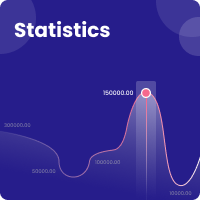Condylar position according to facial biotype in cone beam tomography
DOI:
https://doi.org/10.21615/cesodon.5998Keywords:
dental occlusion, facial biotype, cone beam computed tomography, mandibular condyle, temporomandibular jointAbstract
Introduction and objective: The condylar position, as well as the facial biotype, are important to maintain an occlusion and a balanced stomatognathic system. The objective of this article is to relate the facial biotype with the condylar position in cone beam tomography in patients without temporomandibular disorders. Materials and methods: 59 Cone Beam Computer Tomography (CBCT) of 23 male and 36 female patients, with age between 14 and 59 years, were classified into dolichofacial, mesofacial and braquifacial biotypes. In order to evaluate the condylar position, the dimension of the joint spaces is evaluated. CBCT were measured with I-Cat vision and STATA 14 was used for statistical analysis, it was endorsed by the ethics committee of the Universidad del Valle. Results: The interobserver correlation was performed, obtaining a Kappa of 0.85. 45 patients correspond to the braquifacial biotype, 8 dolichofacial and 6 mesofacial. In all the joint spaces, the braquifacial ones presented values of greater dimension and the dolichofacial smaller dimension. It was found that the medial spaces (CMS) present similar values in terms of laterality within each biotype, having differences of 0.02 to 0.09, however, for the central (CCS) and lateral (CLS) joint spaces greater differences between one side and the other, having differences 0.15 to 0.62 which is significant. CLS was the joint space with the smallest dimension in all biotypes. Evaluating the joint spaces for each biotype, significant differences (P <0.05) were found in right CMS, right CCS and very close to the left CLS significance. Higher values were observed in all the joint spaces in males, all of which are braquifacial, being statistically significant (P <0.05) for the joint space in the right CCS, Right CLS and Left CLS. Conclusions: The dimensions of the joint spaces are related to the facial biotype, the coronal section tomographic measurements are a necessary input as part of the analysis and diagnosis related to the facial biotype.
Downloads
References
Girardot A. Comparison of Condylar Position in Hyperdivergent and Hypodivergent Facial Skeletal Types. The Angle Orthodontist; 2001; 71 (4): 240-246.
Concha Guillermo, Imágenes por resonancia magnética de la articulación temporomandibular. Revista HCUCh; 2007; (18): 121 – 30.
Okeson J. Tratamiento de oclusión y afecciones temporomandibulares. 5th ed. Madrid, España: Elsevier; 2013: 8-26.
Arieta. J, Silva. M, Flores.C,Paredes.N. Spatial analysis of condyle position according to sagittal skeletal relationship, assessed by cone beam computed tomography. Progress in Orthodontics; 2013; 14: 36.
Roque Gina D, Meneses Abraham, Norberto Frab, De Almeida Solange, Haiter Francisco. La tomografía computarizada cone beam en la ortodoncia, ortopedia facial y funcional. Rev. Estomatol. Herediana; 2015; 25, (1): 61-78.
Finlayson Antonio F.Epifanio Rodolfo.La tomografía computarizada de haz cónico.Revista UstaSalud; 2008; 7(2): 125-131.
Moya Juan Pablo, Nasu Steven, Martinez Christian. Conceptos fundamentales en la interpretación de la tomografía de radio de cono desde la odontología general. Grupo insao, Universidad Autónoma de Manizales; 2009.
Park, I. Y., Kim, J. H., & Park, Y. H. Three-dimensional cone-beam computed tomography based comparison of condylar position and morphology according to the vertical skeletal pattern. Korean journal of orthodontics; 2015; 45(2): 66–73.
Gorucu-Coskuner H, Atik E, El H. Reliability of cone-beam computed tomography for temporomandibular joint analysis. Korean J Orthod; 2019; 49(2): 81-88.
Cerda-Peralta Bárbara, Schulz-Rosales Rolando, López-Garrido Jimena, Romo-Ormazabal Fernando. Cephalometric norms related to Facial type in eugnathic Chilean adults. Rev. Clin. Periodoncia Implantol. Rehabil. Oral; 2019; 12 (1): 8-11.
Saccucci M, Polimeni A, Festa F, Tecco S. Do skeletal cephalometric characteristics correlate with condylar volume. surface and shape? A 3D analysis. Head Face Med; 2012; 8: 15.
Kazumi Ikeda, Kawamura A. Assessment of Optimal Condylar Position in in the Coronal and Axial Planes with Limited Cone-Beam Computed Tomography. Journal of Prosthodontics; 2011; 20: 432–438.
Hasebe. A, Yamaguchi.T, Nakawaki.T, Hikita Y. Comparison of condylar size among different anteroposterior and vertical skeletal patterns using cone-beam computed tomography. The Angle Orthodontist; 2019; 89; (2): 306-311.
Custodio W, Gomes SG, Faot F, Garcia RC, Del Bel Cury AA. Occlusal force, electromyographic activity of masticatory muscles and mandibular flexure of subjects with different facial types. J Appl Oral Sci; 2011; 19: 343–349.
Stringert HG, Worms FW. Variations in skeletal and dental patterns in patients with structural and functional alterations of the temporomandibular joint: a preliminary report. Am J Orthod; 1986; 89: 285–297.
Maglione, Horacio. Disfunción craneomandibular. Afecciones de los músculos masticadores y de la ATM, dolor orofacial; 2008.
Downloads
Published
How to Cite
Issue
Section
License
Copyright (c) 2021 CES Odontología

This work is licensed under a Creative Commons Attribution-NonCommercial-ShareAlike 4.0 International License.
| Article metrics | |
|---|---|
| Abstract views | |
| Galley vies | |
| PDF Views | |
| HTML views | |
| Other views | |



